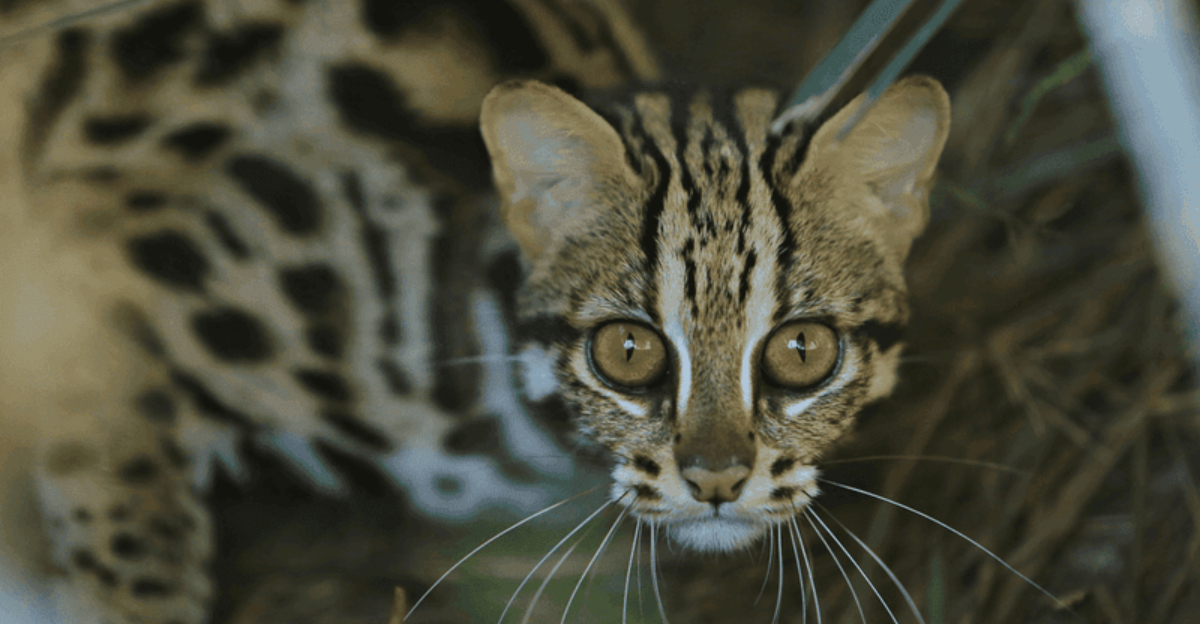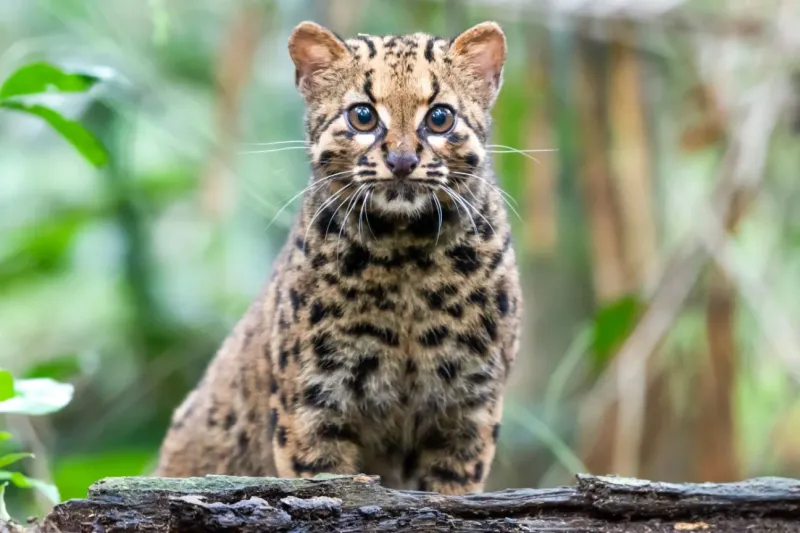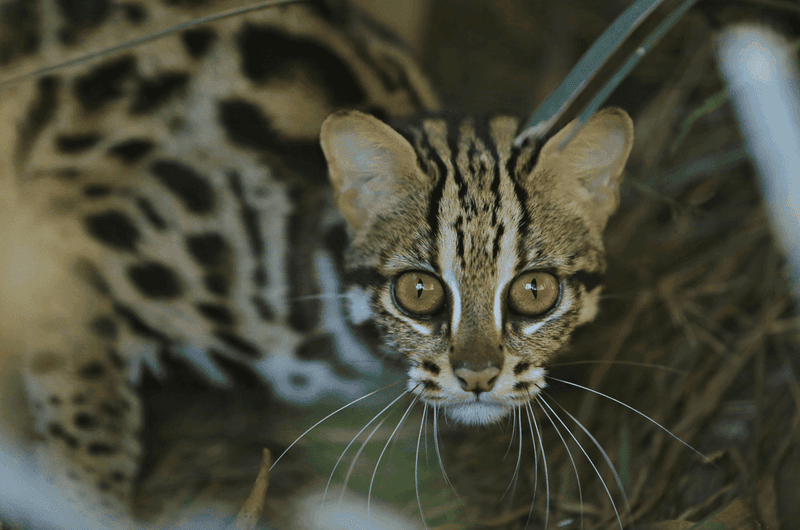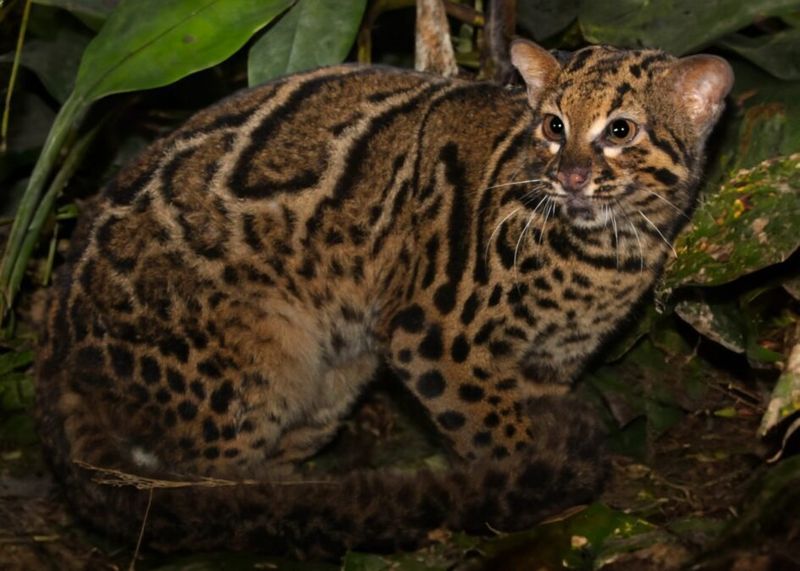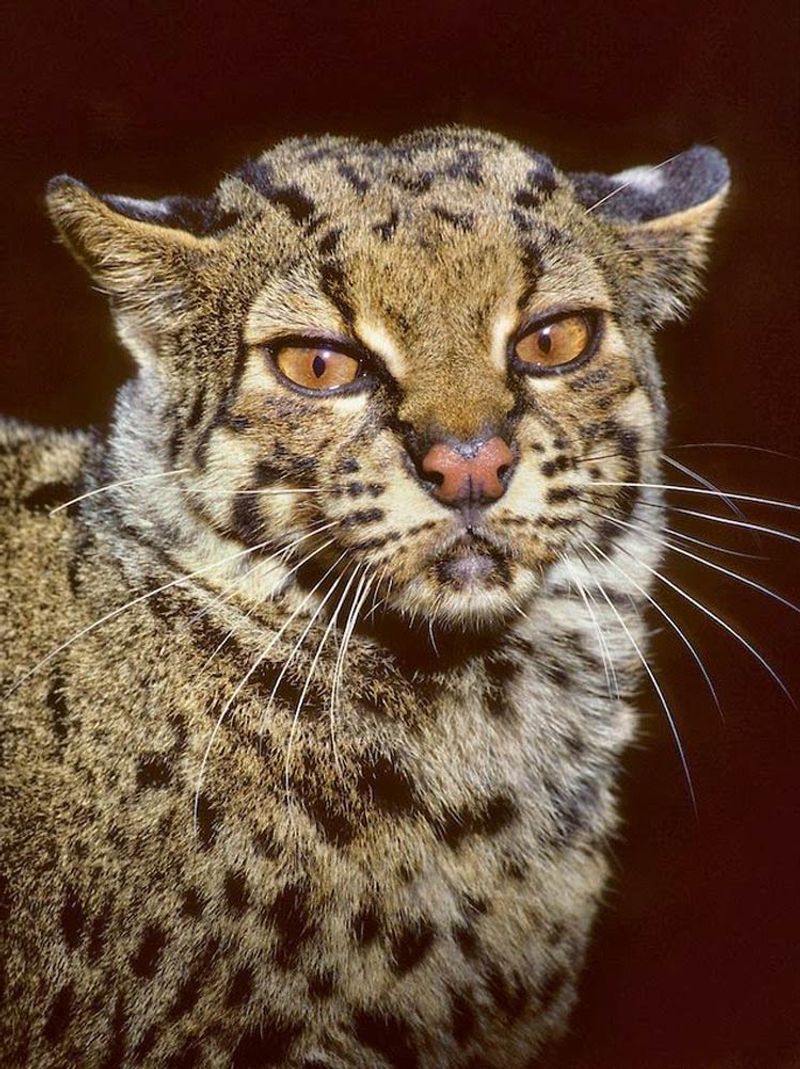📖 Table of Content:
Deep within the dense forests of Southeast Asia dwells a secretive feline rarely glimpsed by humans. The marbled cat’s striking coat blends seamlessly with the dappled light of the trees, making it an expert at concealment. Although related to majestic big cats such as tigers and leopards, this elusive predator is still one of the least understood wild cats on the planet.
Its elusive nature and remote habitat have kept it hidden from extensive scientific study. The marbled cat navigates the forest canopy with agility, relying on stealth and camouflage to hunt. These traits make it both a fascinating and mysterious member of the wild cat family.
Limited encounters with the marbled cat leave many questions about its behavior and ecology unanswered. Its rare appearances highlight the challenges of studying animals that thrive in dense, inaccessible environments. This feline remains a captivating enigma for researchers and wildlife enthusiasts alike.
1. Cloud-Like Coat Patterns
Marbled cats sport one of the most distinctive fur patterns in the feline world. Their orange-brown coat features dark, irregular blotches outlined in black, creating a marbled appearance that resembles clouds. This unique pattern breaks up their outline when they’re perched on tree branches. Unlike the spots of leopards or the stripes of tigers, these swirling patterns provide perfect camouflage in dappled forest light.
The underside of their long tail shows solid spots, while the top continues the marbled pattern. Scientists believe this specialized coat evolved specifically for life in the trees, helping these cats become nearly invisible when hunting or hiding from larger predators.
2. Tree-Dwelling Specialists
Few cats navigate the forest canopy with the skill of marbled cats. Their ankles can rotate 180 degrees, allowing them to descend trees headfirst like squirrels—a rare ability among felines. Extra-large paws equipped with sharp claws provide a superior grip on branches.
Their exceptionally long tail, nearly as long as their body, serves as a crucial balancing tool when leaping between trees. Researchers have observed these cats spending most of their lives above ground, hunting birds, squirrels, and lizards in the treetops. Forest fragmentation threatens their specialized lifestyle, as these cats require large, connected forest canopies to thrive.
3. Big Cat in a Small Package
Despite weighing only 4-11 pounds—about the size of a large house cat—marbled cats possess genetic and physical traits remarkably similar to big cats. DNA analysis reveals they’re more closely related to lions and tigers than to typical small wild cats. Their enlarged upper canine teeth resemble those of clouded leopards, suggesting an evolutionary adaptation for hunting larger prey.
The pupils of their eyes dilate into perfect circles rather than slits when constricted, another trait shared with big cats. Researchers classify them in the Neofelis lineage alongside clouded leopards, making these diminutive hunters miniature versions of their much larger cousins.
4. Twilight Hunters
Cloaked in darkness, marbled cats come alive during dawn and dusk. These crepuscular hunters take advantage of low-light conditions when prey is active but visibility remains challenging for predators. Their large eyes contain a special reflective layer called tapetum lucidum that enhances night vision.
Motion-activated cameras have captured them stalking through the understory during these twilight hours. Their hunting strategy involves patient waiting followed by explosive bursts of speed. Unlike many cats that primarily hunt on the ground, marbled cats often ambush birds at their roosting sites, using their tree-climbing abilities to access prey that other predators cannot reach.
5. Vanishing Population Mystery
Conservation efforts for marbled cats face a fundamental challenge—scientists aren’t sure how many remain in the wild. Their secretive nature and preference for dense forests make population surveys extremely difficult. Camera traps capture these elusive felines at rates far lower than other cat species. Deforestation across Southeast Asia has fragmented their habitat critically.
Palm oil plantations, logging, and agricultural expansion continue to shrink their forest home at alarming rates. Listed as Near Threatened by the International Union for Conservation of Nature, experts fear their status may be more precarious than current data suggests due to ongoing habitat loss and their naturally low population density.
6. Solitary Shadow Dwellers
Social gatherings hold no appeal for the marbled cat. These solitary animals carve out large territories that rarely overlap except during brief mating encounters. Males maintain particularly vast ranges, sometimes spanning over 50 square kilometers. Communication happens primarily through scent marking rather than vocalizations.
They scrape trees with their claws and deposit urine to announce their presence to other cats. When threatened, they can produce a remarkable range of sounds from chirps to growls. Their secretive lifestyle means most interactions between marbled cats remain undocumented by science, with researchers still uncertain about basic aspects of their social structure and mating habits.
7. Scientific Mystery Cat
Among all wild cats, the marbled cat remains one of science’s greatest enigmas. First described by naturalists in 1837, researchers have made surprisingly little progress in understanding their basic biology. No comprehensive studies of their diet exist in the wild, and scientists have never documented their hunting success rates.
Their reproductive cycle remains largely unknown, with estimates of gestation periods based on related species rather than direct observation. Most photographs come from automatic camera traps rather than direct sightings. Researchers hope that emerging technologies like GPS collars, small enough for these cat,s might finally reveal the secrets of these phantom felines before their forest homes disappear entirely.
